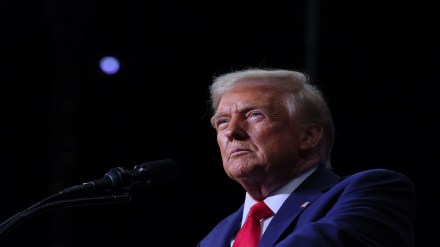By Anita Inder Singh
With Donald Trump as America’s president, no friend or ally needs enemies. Ask America’s European allies, who are shocked that he seems ready to sell Ukraine’s sovereignty and their defences to a 21st century imperialist Russia.
Additionally, he wants the US to swallow up neighbouring North Atlantic Treaty Organization (NATO) ally Canada and Greenland, which is ruled by Denmark, another NATO collaborator. India, which once fought a great freedom struggle against British imperialism, is silent on Trump’s imperialist intentions, just as it has refused to condemn Russia’s in Europe. And Trump’s intent to throw Palestinians out of Gaza and to create a rich man’s Riviera in West Asia pleases Israel — but hardly any other country. International law and territorial integrity are clearly not among Trump’s top priorities; shouldn’t they be more of India’s?
India is silent on these crucial global issues. That does not imply that the mutual admiration society that the transactional Trump and Prime Minister Narendra Modi appear to be forming signals a trouble-free Indo-American relationship. India, as the weaker transactional country, must keep this is mind as it tries to extract goodies from Trump.
Before Modi’s arrival in Washington, Trump repeated warnings that he gave several times during his election campaign. He attacked Indian tariffs as the highest in the world. While threatening India with reciprocal tariffs, Trump has declared that India is a very difficult place for business. At the same time, he and Modi boast that Indo-US trade will soar from the current $190 billion to a mind-boggling $500 billion by 2030.
That prospect did not stop Trump from carrying out a threat, made during his presidential campaign, to use the US military to carry out a mass deportation of undocumented migrants.
Delhi was silent as 104 Indians, shackled and handcuffed by American authorities, returned to India. This was followed by Modi’s statement that he was looking forward to meeting “my old friend” Trump in Washington. Modi pinned the blame on unscrupulous international human traffickers who dupe ordinary people, without explaining why there are so many illegal Indian immigrants in America in the first place. And why didn’t India follow the example of some other countries who sent their own planes to bring back their illegal immigrant citizens instead of letting them be subjected to inhumane treatment in an American military aircraft? But then, Delhi has not been able to explain how some 90 Indians ended up fighting for Russia in Ukraine. Some have died; others are missing although Modi raised the issue with Putin during his official visit to Moscow in June 2024. Clearly, India is bad at ensuring civilised treatment for its citizens.
Trump has long attacked India’s favourable trade balance with America. To reduce the US trade deficit with India, he has offered India the sophisticated F-35 combat aircraft which the Biden administration refused to give because of India’s heavy dependence on Russian weapons. The delivery of Russian arms has stalled since Moscow mounted its invasion of Ukraine in 2022 — so any American material is welcomed by India, whose border dispute with China remains unsettled. But the problem of transferring sensitive American technology to a non-ally will remain.
Trump wants India to increase its buys of American oil and to reduce the large purchases of Russian oil that it has made since February 2022 on the grounds that a sanctioned Russia was selling its oil at discounted prices. Trade with Russia has grown, but India has far more trade with the US and Russia’s main strategic partner, China, which threatens India’s territorial sovereignty while being its second-biggest trading partner, after America.
Together, more American arms and energy buys will increase India’s dependence on Washington, which already buys 16% of its exports. Russia buys less than 1%. That will strengthen the Indo-US military relationship, but it simultaneously highlights India’s muddled foreign policy, and its longstanding ties with Russia, which Delhi has repeatedly hailed as the country which has never hurt India’s interests. It will probably be in India’s interests to move away from Russia which has little to offer except arms and oil.
At the same time India is worried that a Sino-American trade and tariff deal could leave it in the lurch, and block any chance of India driving a wedge between China and the US.
Trump has always favoured a bilateral settlement between India and China. He has now voiced willingness to mediate between them. At best, this suggests that good ties between them would be in America’s interest but doesn’t show what price Washington or Beijing might expect India to pay in that event. Ask the stunned Europeans again about Trump’s imperial ambitions where the territorial integrity of states like Ukraine, Canada, and Denmark are involved — and one might wonder what territorial grabs by China in South and Southeast Asia might be countenanced by Trump if he can strike an economic deal with China.
Modi and Trump envisage an Indian Ocean strategic venture stretching from West Asia to the Pacific. India, whose defence spending is one-third that of China, finds it hard to counter China’s military and economic influence even in its immediate Indian Ocean area. The crunch will come when Trump asks India how much it will contribute financially to a possible anti-China project.
All told, the latest Trump-Modi talks augur that transactions, ignoring sound reasons of state, legal, and humanitarian principles, may not be the best way to strengthen the Indo-US relationship.
The writer is founding professor, Centre for Peace and Conflict Resolution, New Delhi.
Disclaimer: Views expressed are personal and do not reflect the official position or policy of FinancialExpress.com. Reproducing this content without permission is prohibited.
